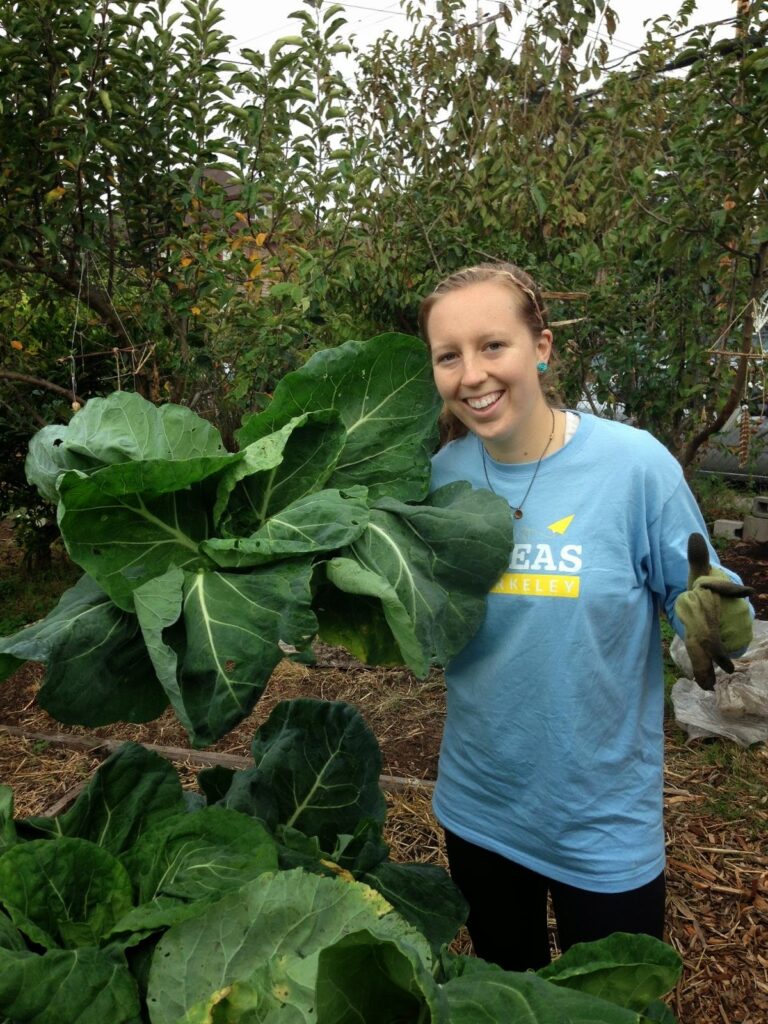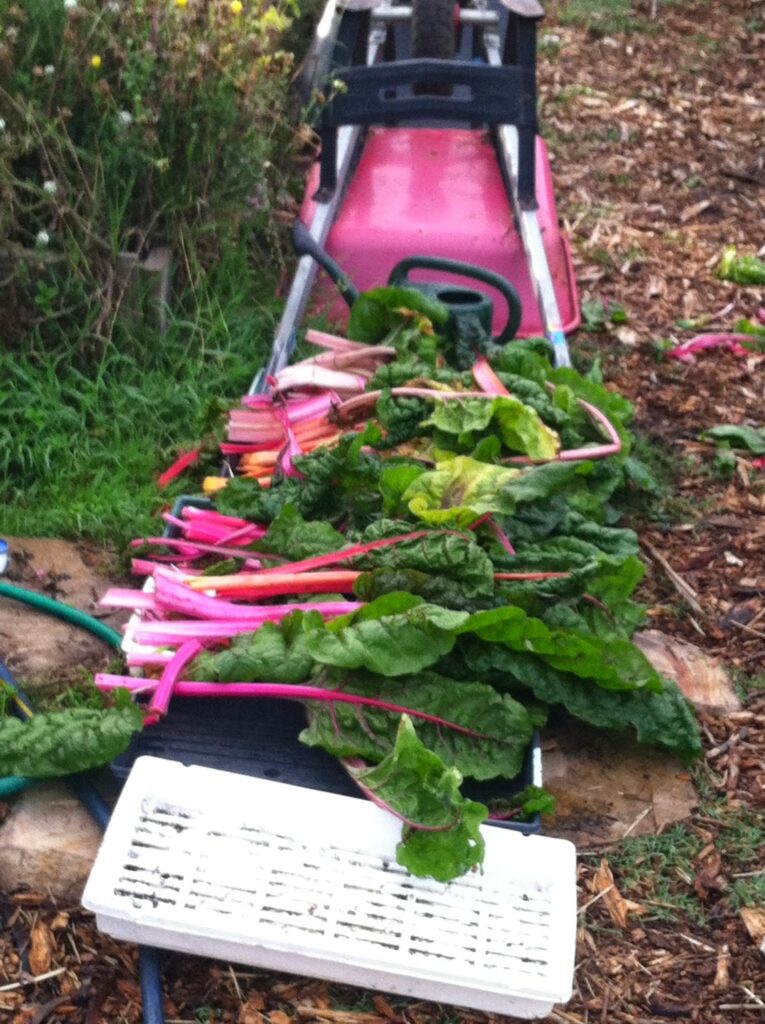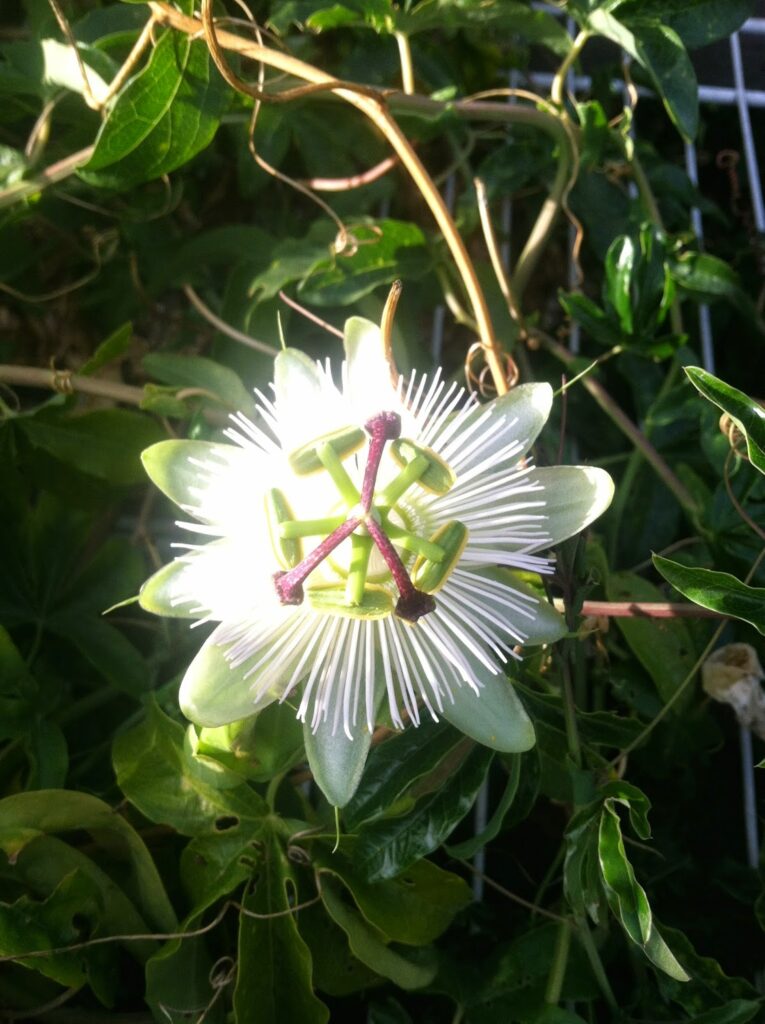
On a typical day walking to class, my eyes are caught by the sight of persimmon trees arching over the sidewalk offering their unusual fruits, small backyard gardens bursting over fences and property lines, and lime bushes camouflaging their green citrus offerings in a cloud of bright green leaves. Urban agriculture seems to be very much alive and well in Berkeley, especially by my East Coast-rooted standards. But, I believe there is more to the story than the superficial pleasure. I take in the fact that these food production centers exist; scattered among city and residential streets in the Bay Area. In my first semester out in California, I’ve made it a mission to learn more about and participate in the movement that is urban agriculture.

My direct experiences in the urban agriculture scene have been universally positive; my research into policy and land use disputes has shown the controversial nature or flip-side of the urban-ag coin. Tuesday mornings at the Claremont Middle School garden in Oakland, and Friday mornings in the UC Berkeley Student Organic Garden (SOGA) often have me up to my elbows in compost, soil, or over-sized collard plants. I teach a weekly lesson in the Claremont garden to boisterous groups of 6 to 8th graders with the help of a volunteer garden manager who coordinates the garden lessons during an elective period at the school. The students at Claremont, as well as students I used to teach in Boston, have responded in meaningful and often hilarious ways to their first hands-on experiences with certain plants, which hopefully will make their way increasingly into school lunches.
I was inspired to explore more school garden projects in the area, and made it out to the Edible Schoolyard at MLK Middle School, the famous Alice Waters-backed project. The level of organization and productivity at that site was amazing: orderly rows of flowers and vegetables integrated into gazebo-like structures, a toolshed cleaner than my apartment, a wood-fired pizza oven, solar panels, and chickens wandering freely.
Also part of the Urban Garden Ecosystems class I’ve been taking this fall are the weekly lab sections in SOGA, where I’ve been learning the agroecological principles of soil building, intercropping, and seed starting. The harvest yields have often sent me back to ERG bearing trash bags full of basil, greens, and kale. These experiences led to the enthusiastic re-writing of the popular country song “Cruise,” as “baby you a song, you make me wanna roll my shirt sleeves up, and plant” — a song my group and I performed at our final project presentation last week.

Behind these rosy experiences is a larger debate on competing land use claims — development vs. environment. San Francisco made headlines earlier this fall for its trailblazing urban ag bill, AB 551, the Urban Agriculture Incentive Zones Act, but also for worsening the housing crisis with this policy. The author of the Atlantic Monthly article argues that urban agriculture on vacant lots is more appropriate to a city like Detroit, rather than SF where rent prices are sky-rocketing and there is a need for increased urban density; leave the gardens for the rooftops, he argues, not on developable lands. A controversy closer to home is the Gill tract redevelopment plans by the University. Starting in 2012, students and local organizers have been “occupying the farm” and arguing with the university over the proposed redevelopment of this land in Albany, part of a land-grant university system that they argue should become a center for urban agricultural research rather than a grocery store and affordable housing development. The fight for the land was featured in a recent documentary that premiered in Berkeley, “Occupy the Farm.”
While these debates are far from settled, I believe decentralized centers of organic food production are the best way forward for building food security and resiliency in any community. As a solution to climate change, I see great potential in organic soil carbon sequestration, and eating locally grown produce reduces food-miles traveled that in turn reduces transportation-related emissions. I will continue arguing against the injustices of the current industrial food system, the consequences of eating a diet saturated by high-fructose corn syrup, and in favor of the merits of integrated systems like aquaponics structure. Growing food in small spaces, whether for a tiny home or urban restaurant like the soon-to-open Perennial restaurant in SF, is the way of the future.

Some day my sister and I hope to open a farm-school where gardens and environmental education are center stage, where students learn in outdoor and real-world classrooms. We want to have lavender bushes, goats, and honeybees, among other things. Until that day comes, I will keep learning from urban farmers and tasting hybrid persimmon varieties at the Berkeley farmer’s market.
Header image: Working on a school garden in Boston